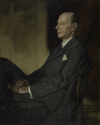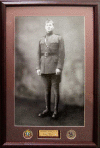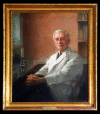Blood and war
Abstract
In 1894 Ulsterman and pathologist Almroth Wright described the citation of blood. Twenty-one years later it was introduced into wartime and clinical practice. Harvard Medical School had a large part in providing Colonel Andrew Fullerton, later Professor of Surgery, Queen's Belfast, with the intellectual and practical help for the Allies to deploy blood on the post-Somme Western Front and in Salonika. The key investigators and clinicians were Americans and Canadians who with Fullerton and Wright instructed the Allies. The key enablers were two Harvard-trained surgeons surnamed Robertson-Oswald H. ("Robby") and L. Bruce (no relation). Physician Roger I. Lee of Harvard, surgeon George W Crile of Cleveland, Peyton Rous of the Rockefeller Institute and Richard Lewisohn of Mount Sinai Hospital, both located in the Upper East Side of New York City, played key roles.By Armistice in 1918, indirect citrated nutrient-enhanced blood transfusion was widely used by the Allies. Geoffrey Keynes was taught the techniques of blood transfusion by Dr. Benjamin Harrison Alton of Harvard at a Casualty Clearing Station near Albert at the time of the Battle of Passchendaele. Professor "Robby" Robertson, DSO, Sir Geoffrey Keynes and Sir Thomas Houston established blood banking.
Figures










Similar articles
-
Blood transfusion at the time of the First World War--practice and promise at the birth of transfusion medicine.Transfus Med. 2014 Dec;24(6):325-34. doi: 10.1111/tme.12171. Transfus Med. 2014. PMID: 25586955 Review.
-
Putting the pieces together: Roger I. Lee and modern transfusion medicine.Transfus Med Rev. 2005 Jan;19(1):81-4. doi: 10.1016/j.tmrv.2004.09.003. Transfus Med Rev. 2005. PMID: 15830330
-
The University of Toronto's lasting contribution to war surgery: how Maj. L. Bruce Robertson fundamentally transformed thinking toward blood transfusion during the First World War.Can J Surg. 2017 Jun;60(3):152-154. doi: 10.1503/cjs.006317. Can J Surg. 2017. PMID: 28570213 Free PMC article.
-
Blood transfusion during World War I (1914 - 1918).Hist Sci Med. 2016 Jul;50(3):353-366. Hist Sci Med. 2016. PMID: 30005457 English, French.
-
Canadian surgeons and the introduction of blood transfusion in war surgery.Transfus Med Rev. 2008 Jan;22(1):77-86. doi: 10.1016/j.tmrv.2007.09.004. Transfus Med Rev. 2008. PMID: 18063194 Review.
Cited by
-
Our blood your money.Ulster Med J. 2013 May;82(2):114-20. Ulster Med J. 2013. PMID: 24082291 Free PMC article. No abstract available.
-
Pragmatic O-Positive Whole-blood RandoMizaTion in male trauma Patients (POWeR-MTP).Eur J Trauma Emerg Surg. 2025 Apr 16;51(1):175. doi: 10.1007/s00068-025-02848-0. Eur J Trauma Emerg Surg. 2025. PMID: 40237834 Free PMC article. Clinical Trial.
-
WAR NEUROSURGERY: TRIUMPHS AND TRANSPORTATION.Ulster Med J. 2020 Sep;89(2):103-110. Epub 2020 Oct 21. Ulster Med J. 2020. PMID: 33093696 Free PMC article. No abstract available.
-
Tuberculous scrofula: Belfast experience.Ulster Med J. 2011 May;80(2):97-103. Ulster Med J. 2011. PMID: 22347752 Free PMC article. No abstract available.
-
Higgs Boson: Chapel Hill, CERN, QUB.Ulster Med J. 2022 Sep;91(3):158-165. Epub 2022 Dec 5. Ulster Med J. 2022. PMID: 36474846 Free PMC article. No abstract available.
References
-
- Flexner S, Flexner JT. William Henry Welch and the Heroic Age of American Medicine. New York: Viking Press; 1941. pp. 368–70.
-
- Landsteiner K. Ueber Agglutinationserscheinungen normalen menschlichen Blutes. Wien Klin Wchnsch. 1901;14:1132–4. - PubMed
-
- Karl Landsteiner. Nobel Lectures, Physiology or Medicine 1922-1941. Amsterdam: Elsevier Publishing; 1965. The Nobel Prize in Physiology or Medicine. http://nobelprize.org/nobelprizes/medicine/laureates/1930/landsteiner-html. (Last accessed 9 Aug. 2010)
Publication types
MeSH terms
LinkOut - more resources
Full Text Sources
Medical
